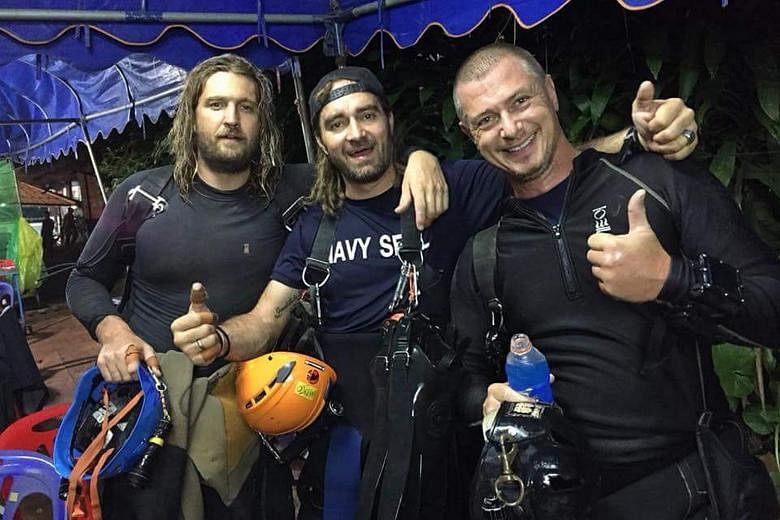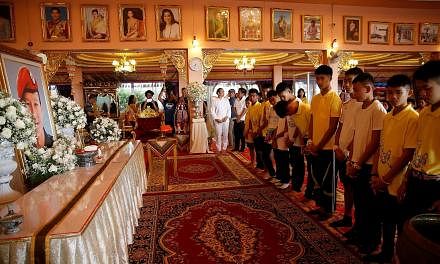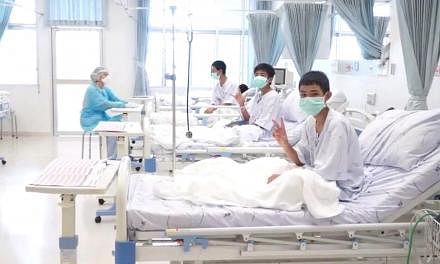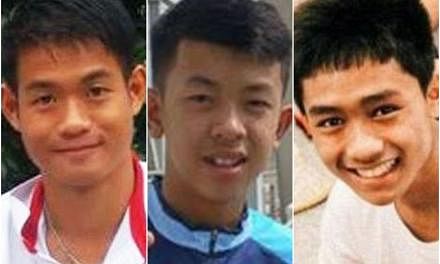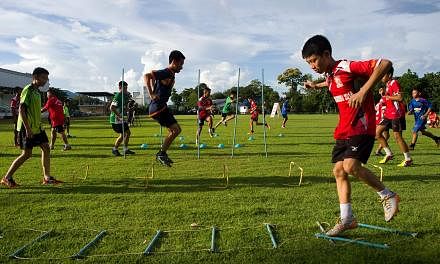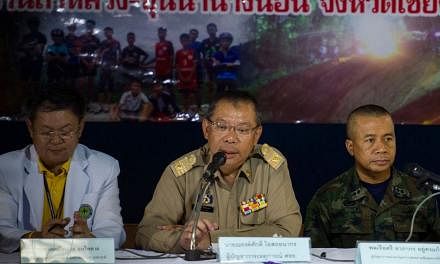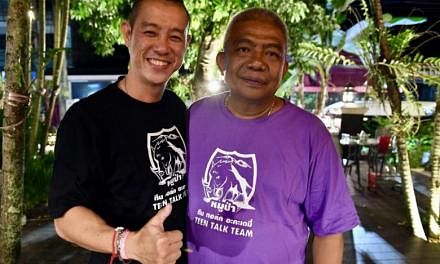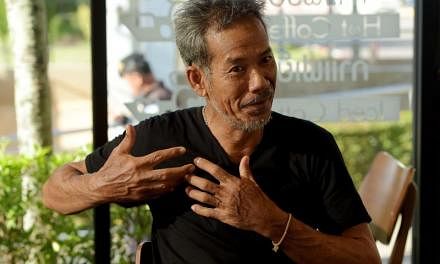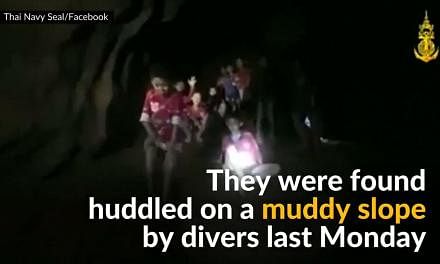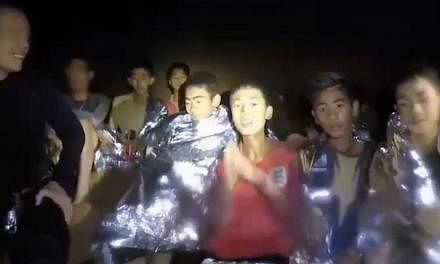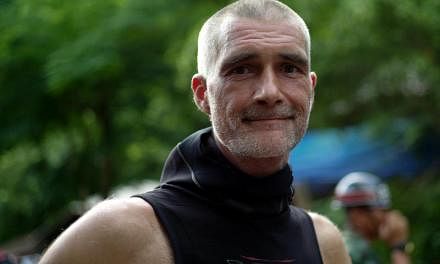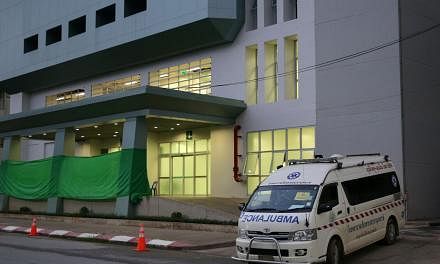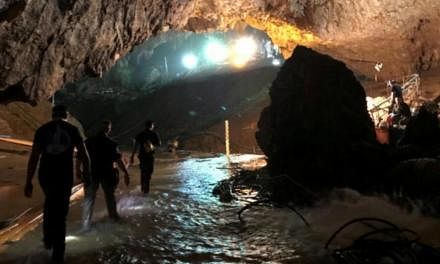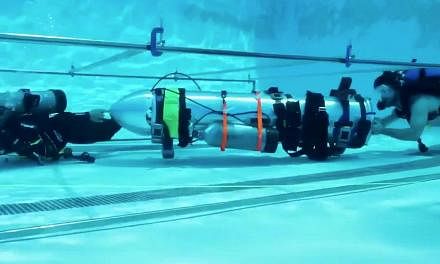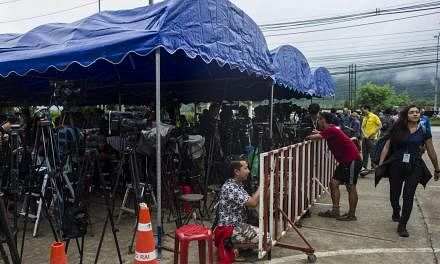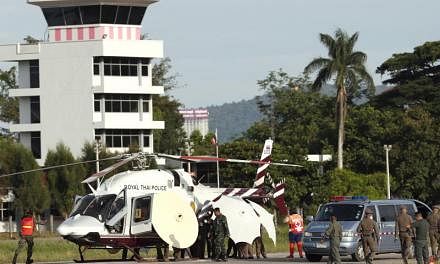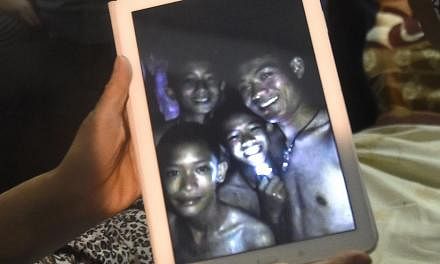CHIANG RAI (WASHINGTON POST) - Long-time dive school partners Mikko Paasi and Ivan Karadzic were on different continents when they got the call for help.
Paasi, 43, rushed to this northern Thai city from Malta on July 2, his eighth wedding anniversary, to meet up with Karadzic, who had cut short a cave-diving vacation near the Thai province of Krabi, and one of their close friends, Erik Brown, a Canadian diver.
The Thai government, the divers said, had told them it needed their expertise and specialised equipment for an audacious mission: To locate and ultimately, it was hoped, extricate 12 young boys and their football coach from a flooded cave by diving them out.
Part of a small, tight-knit group of technical divers used to a laid-back life on the resort island of Koh Tao, the three eventually became a crucial part of the effort to shepherd the boys through the cave's narrow, mud-clogged passages, as the world waited and watched.
United States military officials described them as among the world's top cave divers, whose niche passion helped pull off an undertaking many thought would end in multiple deaths.
"If you can use the skill set to help in any way you can, you have to," said Brown, 36. "Lots of people would have done it - we just happened to be really close."
Koh Tao, the trio's base in the Gulf of Thailand, has lured divers since the late 1980s with its clear aquamarine waters, sunny weather and easy access to dive spots.
Jim Donaldson, a partner and manager at Big Blue Diving, a Koh Tao dive school, estimates that there were just six dive shops on the 20 sq km island in 2000, a year after he arrived, compared with about 65 now.
"It just really absolutely exploded," he said.
Koh Tao's status as a dive capital has followed Thailand's transformation into a global tourism hub. Last year, more than 35 million people visited the South-east Asian country, according to the national tourism authority, accounting for some 12 per cent of its gross domestic product.
Karadzic, 44, was just another tourist when he visited Koh Tao in 2006 on a recreational diving holiday from his home in Denmark. The trip, he said, was life-changing.
"I was sucked back into diving," he said in an interview from Koh Tao, where he returned last week after the last group of boys was freed from the cave and recovering along with the others in a hospital.
He quit his job in Denmark, sold his apartment and moved to Koh Tao to become a dive instructor. He started teaching others to dive in 2007 and now runs a technical diving school with Paasi. Brown runs his own professional cave-diving school on the island.
As news spread of the boys' disappearance on June 23, Paasi and his friends put out a call to action on their Facebook pages. They first asked for specialised gear that could help Thai navy divers navigate the Tham Luang cave complex outside Mae Sai, in northern Thailand, where the boys were stranded.
Dive shops on Koh Tao readily obliged. "Everyone came together," Donaldson said. "We all put equipment through, and they were desperate. They obviously needed a lot of equipment up there."
Brown and another diver involved in the rescue effort, Ben Reymenants, originally from Belgium, had previously worked at Big Blue Diving, he said.
Soon, though, it was clear that the Thai Navy Seals, trained for open-water diving, did not have the skills to properly search the flooded cave chambers for the boys. The call changed from one for equipment to one for able divers, Karadzic said.
The divers started making plans to travel to Mae Sai and urged others in their network to join them.
"Thamluang urgently needs STRONG diving volunteers!!!!" the Finnish-born Paasi wrote in a Facebook post a day before he left Malta, attaching a hand-drawn, cross-sectional map of the cave.
Describing the job, he wrote: "You must be able to: know how to breathe through a regulator and pull yourself using the guide rope against cold (~ 20C) and strong current, in low visibility without panicking."
Karadzic and Brown arrived in Chiang Rai together on the morning of July 2. Hours later, two British cave divers found the boys, emaciated and huddled on a slippery outcrop above the water. The search mission was instantly transformed into a rescue mission.
Karadzic, Brown and Paasi worked with a team of 15 others, including British divers and Thai Navy Seals, whom officials described as "all-stars".
During the three days it took to pull the boys and their coach from the cave, Paasi was stationed deep inside, helping move the sedated boys swaddled in flexible stretchers from one dive spot to the next.
"Special people, special skills and special equipment got together," Paasi said.
The core group of 18 divers ferried the boys to a larger team of international rescuers, who then hooked the boys one by one into a complex relay system and transported them through the cave's dry chambers, across fields of rocks and boulders.
Since divers spoke mainly in English, interpreters were needed to ensure that 54-year-old Tan Xiaolong, a Chinese diver stationed with US Air Force rescuers receiving the boys as they emerged from the water, would understand all the commands.
"The Thai side also sent interpreters who could translate Chinese into Thai," Tan said.
But there was one command that needed no translation. Tan was the diver tasked with holding a static guide rope leading out of the cave so he could feel the tug signalling when a diver was bringing a boy out of the water and preparing to pass him to the next stage.
"It was clear and strong, with a distinct rhythm," he said of the first time he felt it.
"At this moment, I knew the first child had been successfully rescued, and I felt very moved."
All 12 boys and their 25-year-old coach were rescued, alive, by nightfall on July 10. They will be released from hospital on Thursday after a period of quarantine and treatment for minor infections, returning home to Mae Sai almost a month after they went missing.
Back on Koh Tao, the Facebook pages of the divers and dive shops were flooded with praise and encouragement in Thai and English as each boy emerged safely.
"Watching it here in Koh Tao, watching it sort of live as it unfolded, and knowing that these boys were involved in helping get these kids out - it was cool," Donaldson said.
"It was very cool."
